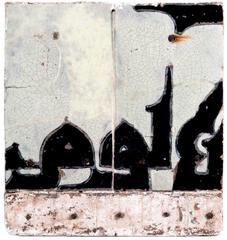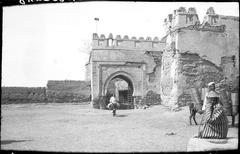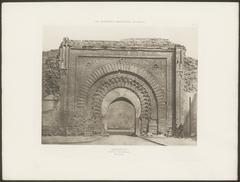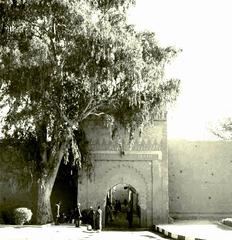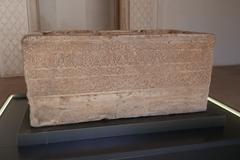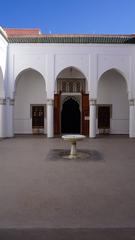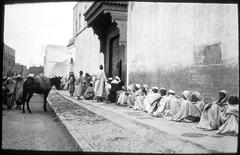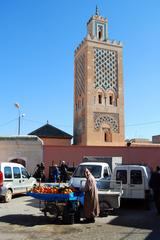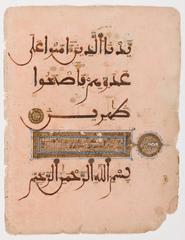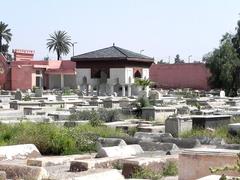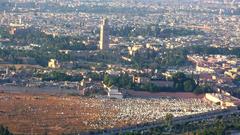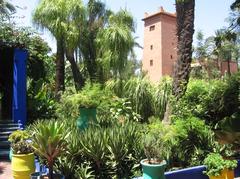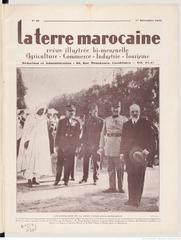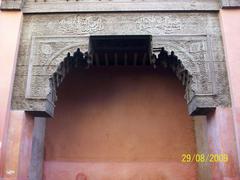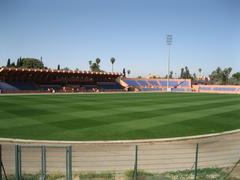
Church of the Saints Martyrs Marrakesh: Visiting Hours, Tickets, and Complete Travel Guide
Date: 04/07/2025
Introduction
The Church of the Saints Martyrs (Église des Saints Martyrs) stands as a remarkable symbol of Marrakesh’s multicultural identity. Located in the heart of the dynamic Guéliz district, this historical Catholic church is celebrated for its unique blend of Art Deco and Moorish architectural styles, its interfaith significance, and its ongoing role in the city’s spiritual and social life. Whether you are passionate about history, architecture, or are seeking meaningful travel experiences among Marrakesh’s historical sites, this guide provides detailed insights into the church’s origins, visitor information, and practical tips for your visit (marrakechcode.com; TouchScreenTravels; Tipsiti).
Table of Contents
- Origins and Construction
- Architectural Features and Artistic Heritage
- Dedication and Historical Significance
- Interfaith and Social Roles
- Visiting Hours and Practical Information
- Accessibility and Visitor Facilities
- Etiquette and Travel Tips
- Nearby Attractions
- Frequently Asked Questions (FAQ)
- Summary and Final Tips
- Sources and Further Reading
Origins and Construction
Commissioned during the French Protectorate, the Church of the Saints Martyrs was constructed between 1928 and 1931, designed by renowned architect Henri Prost. Situated directly opposite a mosque, its location is a powerful testament to Marrakesh’s tradition of interfaith coexistence (marrakechcode.com). Prost’s vision harmonized European modernism with local Moroccan artistry, reflecting the broader urban modernization efforts of the Guéliz district—a district itself named in adaptation of the French word for “church,” “église.”
Architectural Features and Artistic Heritage
The church’s architecture embodies a fusion of restrained Art Deco lines and rich Moorish details:
- Façade and Structure: The whitewashed exterior features geometric Art Deco motifs softened by traditional Moroccan flourishes. The bell tower, a visual landmark, combines angular Catholic forms with Moorish arches and decorative bands (Tipsiti).
- Interior Highlights: Inside, the nave is bright and open, with high ceilings, stylized columns, and stained glass windows that blend Christian iconography with Moroccan zellige patterns. A monumental fresco of Christ Pantocrator by the Bouton brothers, painted in 1951, dominates the sanctuary, while a suspended Byzantine-style cross by G. Puvilland (1971) adds further spiritual depth (marrakechcode.com).
- Material and Craftsmanship: The church showcases local limestone, brick, and stucco, with intricate plasterwork and decorative tile panels created by Moroccan artisans. The harmonious blend of French and Moroccan elements is evident throughout, from the sanctuary’s apse to the understated iconography and geometric ornamentation (Wanderlog).
Dedication and Historical Significance
The church is dedicated to five Franciscan friars—Berard, Peter, Otho, Adjutus, and Accursius—martyred in Marrakesh on January 16, 1220, for their missionary work during the Almohad era (moroccotravelblog.com). Their canonization in 1481 and the church’s dedication highlight a poignant chapter in Christian-Muslim relations. Marrakesh’s spiritual heritage is further enriched by the nearby shrines of the revered Seven Saints, symbolizing a city at the crossroads of diverse faiths (Made in Marrakech).
Interfaith and Social Roles
From its inception, the church has stood as a beacon of religious tolerance and dialogue. Its congregation is notably diverse, welcoming Sub-Saharan Africans, expatriates, and local Catholics. The church’s proximity to a mosque underscores Morocco’s enduring tradition of convivencia—peaceful interfaith coexistence (TouchScreenTravels).
Beyond its spiritual function, the church partners with Caritas to deliver social outreach—supporting migrants, students, and vulnerable populations through food distribution, educational programs, and community initiatives (bewilderedinmorocco.com).
Visiting Hours and Practical Information
As of July 2025:
- Monday: Closed
- Tuesday to Sunday: 8:00 am – 8:30 pm (Ibn Battuta Travel)
- Mass Services:
- Weekdays: 7:00 pm
- Saturday: 6:30 pm
- Sunday: 10:30 am (Petit Futé)
Entry: Free. Donations are encouraged to support church maintenance and charitable work.
Guided Tours: Available upon request—arrange through the parish office or local tour operators. Tours provide in-depth historical and artistic context.
Accessibility and Visitor Facilities
- Wheelchair Access: Ramps at the main entrance; some areas may have minor steps.
- Restrooms: Basic facilities available.
- Languages: French is primary; some staff speak English or Spanish. Basic French or Moroccan Arabic phrases are appreciated (Lonely Planet).
- Safety: Guéliz is a safe, centrally located district. Keep valuables secure; for assistance, contact local authorities or the central police station at Djemaa el Fna.
Etiquette and Travel Tips
- Dress Code: Modest attire required—shoulders and knees covered for all visitors (Lonely Planet).
- Behavior: Maintain silence and respect during services. Photography is permitted with prior permission, especially outside of Mass.
- Best Times to Visit: Spring (March–May) and autumn (September–November) offer mild weather. Early mornings or late afternoons are ideal for natural lighting and fewer crowds. The church remains open during Ramadan, but respect local customs about public eating and drinking.
- Currency: Use Moroccan Dirham (MAD); exchange at reputable vendors.
- Hydration: Stay hydrated, particularly in hot weather (Lonely Planet).
Nearby Attractions
- El Harti Park: A tranquil green space ideal for relaxation.
- Garden of the Arts: Features local and international art installations.
- Jemaa el-Fnaa Square: Marrakesh’s iconic market and cultural hub.
- Majorelle Garden: A celebrated botanical garden and museum.
- Restaurants and Cafés: Numerous options in Guéliz for Moroccan and international cuisine.
- Shopping: Modern boutiques and malls in the district (Visit Marrakech).
Frequently Asked Questions (FAQ)
Q: Is there an entrance fee?
A: No, entry is free. Donations are appreciated.
Q: Are guided tours available?
A: Yes, by prior arrangement via the parish or local tour providers.
Q: Is the church wheelchair accessible?
A: Yes, with ramp access at the main entrance.
Q: Can visitors attend Mass?
A: Yes, all are welcome.
Q: Is photography allowed?
A: Permitted with prior permission and outside of service times.
Summary and Final Tips
The Church of the Saints Martyrs is an essential stop for anyone exploring Marrakesh’s spiritual and architectural heritage. Its evocative blend of Art Deco and Moorish styles, proximity to a mosque, and vibrant community life make it a living symbol of the city’s pluralistic spirit. Free entry, accessible facilities, and opportunities for guided tours mean every visitor can appreciate its rich history and artistry (marrakechcode.com; Tipsiti; Made in Marrakech). The church’s commitment to social outreach through Caritas further illustrates its role in Marrakesh’s evolving community.
For the latest updates on visiting hours, events, or guided tours, download the Audiala app and explore our related posts. Immerse yourself in this unique Marrakesh historical site, and experience firsthand the enduring traditions of faith, coexistence, and artistic achievement (TouchScreenTravels).
Sources and Further Reading
- Church of the Saints Martyrs in Marrakesh: History, Visiting Hours, Tickets, and Must-See Features
- When the Seven Saints of Marrakech Come Marching Home
- Visiting the Church of the Holy Martyrs in Marrakech: Hours, Tickets, and Architectural Insights
- Once Upon a Time: The Church of the Holy Martyrs
- Seven Men Marrakech Morocco Spiritual Trail
- The Catholic Church in Marrakech: The Church of the Saints Martyrs
- Visit Marrakech
- Petit Futé
- Marrakech Riad
- Lonely Planet
- Ibn Battuta Travel
- Wanderlog
- Google Maps
- Safarway
Visuals Included:
For more travel tips, guides, and updates on Marrakesh’s historical landmarks, download the Audiala app and connect with us on social media.










